The energy drink market, a multi-billion dollar industry, is ripe for disruption. While established brands dominate the shelves, a new contender is brewing: human bean energy drinks. This emerging category promises a natural, invigorating alternative, leveraging the power of ethically sourced ingredients and sustainable practices. But can a newcomer carve out a significant market share against established giants?
This comprehensive analysis delves into the potential of human bean energy drinks, exploring everything from brand development and target audience identification to manufacturing, distribution, and marketing strategies. We’ll examine the competitive landscape, address potential challenges, and ultimately assess the viability of this innovative product in a crowded market.
Brand Naming & Messaging
Human bean energy drinks present a unique branding opportunity, leveraging the natural and wholesome connotations of “bean” while simultaneously conveying a powerful energy boost. Successfully navigating this requires a careful balance of playful imagery and serious health messaging. The brand name and associated slogans must resonate with a health-conscious consumer base while also standing out in a crowded market.The choice of brand name and marketing slogan will significantly influence consumer perception and purchasing decisions.
A strong brand identity will not only communicate the product’s benefits but also establish a distinct position within the competitive landscape. Effective messaging will translate the product’s core value proposition—natural energy—into a compelling narrative that captures the target audience’s attention.
Brand Names
Three potential brand names for a human bean energy drink, each with a distinct personality, are considered here. These names aim to capture the natural, energizing essence of the product while also offering memorability and brand recognition potential.
- BeanBoost: This name is straightforward, easily understood, and emphasizes the energy-boosting properties of the drink. It’s memorable and suitable for a wide target audience.
- Nature’s Surge: This name evokes a feeling of natural power and vitality. It appeals to consumers seeking a natural alternative to synthetic energy drinks, emphasizing the organic origins of the ingredients.
- Humana Bean: This name blends “human” and “bean,” creating a unique and memorable brand identity. It subtly hints at the human connection to nature and the natural energy derived from the drink’s ingredients.
Marketing Slogans
The selected slogans aim to communicate the core value proposition of the drink – natural energy – while also creating an emotional connection with the target audience. Each slogan employs a different approach to achieve this goal.
- BeanBoost: “Naturally Energized. Naturally You.” This slogan emphasizes both the natural source of energy and the feeling of authenticity it provides.
- Nature’s Surge: “Unleash Your Inner Power, Naturally.” This slogan uses evocative language to connect with consumers seeking a natural way to enhance their performance and well-being.
- Humana Bean: “The Human Energy Source.” This slogan is concise and memorable, positioning the drink as a fundamental source of human energy, emphasizing its natural and sustainable origins.
Logo Concept
A logo for a human bean energy drink should visually represent the natural and energizing qualities of the product. One possible concept involves a stylized bean sprout, perhaps in vibrant green, reaching upwards towards the sun.The sprout would symbolize growth, vitality, and natural energy. The sun could be represented by a simple, warm yellow circle, adding a positive and energetic feel.
The overall design should be clean, modern, and easily recognizable, reflecting the product’s focus on natural ingredients and healthy energy. The typeface used should be bold and easily legible, complementing the visual elements and conveying a sense of strength and vitality. The color palette should emphasize natural tones, with greens and yellows dominating, to reinforce the message of natural energy.
Target Audience & Market Positioning
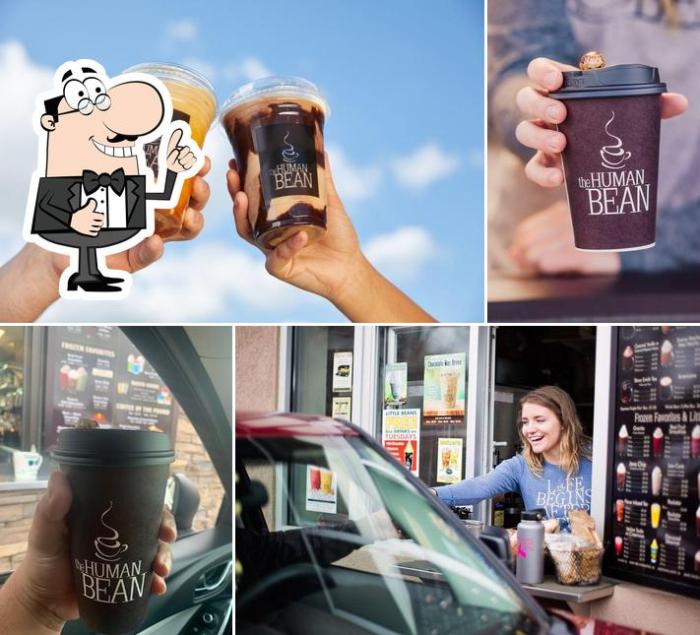
Human Bean energy drinks, with its branding focused on natural ingredients and a relatable, approachable image, targets a distinct demographic within the competitive energy drink market. This contrasts sharply with the aggressive, often extreme-sports-oriented marketing of established brands. The key lies in understanding this nuanced positioning and crafting a marketing strategy to resonate with the intended consumer.The primary target demographic for Human Bean is young adults (18-35) who are health-conscious but also value convenience and a social experience.
This group is increasingly discerning about the ingredients in their food and beverages, seeking natural alternatives to synthetic additives and high sugar content. They are active on social media and prioritize brands that align with their values, emphasizing sustainability and ethical sourcing. Unlike the traditional energy drink consumer, heavily reliant on caffeine for a quick boost, this demographic seeks sustained energy and improved focus without the jitters or crash associated with many existing products.
Market Positioning Compared to Existing Brands
Human Bean differentiates itself from established energy drink brands like Red Bull and Monster by emphasizing natural ingredients and a healthier profile. Red Bull and Monster, for example, heavily rely on synthetic caffeine and taurine, often marketed towards extreme sports enthusiasts and gamers. Human Bean, conversely, aims to appeal to a broader audience seeking a less intense, more sustainable energy boost.
This positioning avoids direct competition with the established giants by focusing on a niche within the broader energy drink market—the health-conscious, socially aware consumer. Competitors like Celsius and Reign Total Body Fuel occupy a similar space, emphasizing functional benefits and healthier ingredients. However, Human Bean can distinguish itself further through unique flavor profiles, sustainable packaging, and a strong emphasis on community engagement.
Marketing Strategy for the Target Demographic
A successful marketing strategy for Human Bean requires a multi-pronged approach focusing on digital engagement and influencer marketing. Social media platforms like Instagram and TikTok are crucial for reaching the target demographic. Visually appealing content showcasing the product’s natural ingredients and active lifestyle association will be key. Collaborations with health and wellness influencers who align with the brand’s values can build credibility and reach a wider audience.
Furthermore, experiential marketing, such as sponsoring yoga classes or fitness events, will create opportunities for direct consumer engagement and brand building. Strategic partnerships with cafes and health food stores will expand distribution and reach the target demographic in their preferred environments. Finally, a strong emphasis on user-generated content and social media contests will foster community engagement and brand loyalty.
The marketing campaign should avoid the aggressive, hyper-masculine imagery often associated with traditional energy drinks, instead opting for a more inclusive and approachable aesthetic that resonates with the health-conscious young adult.
Product Formulation & Ingredients
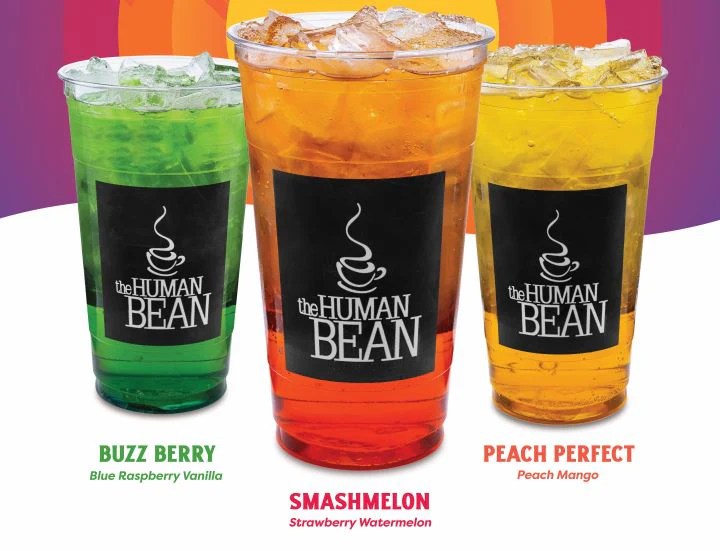
Human Bean energy drinks aim to differentiate themselves through a commitment to natural, high-quality ingredients, offering a healthier alternative to traditional energy drinks laden with artificial sweeteners and stimulants. Three distinct formulations, each targeting a specific consumer need and preference profile, are proposed below. These formulations consider both the potential benefits and drawbacks of the included ingredients, balancing efficacy with consumer safety and well-being.
Formulation Ingredient Lists and Health Impacts
The following three formulations represent diverse approaches to natural energy enhancement. Each ingredient list is carefully considered for its potential synergy and overall impact on consumer health.
- Formulation 1: Focus on sustained energy and cognitive function. This formulation prioritizes a blend of slow-releasing carbohydrates, nootropics, and adaptogens. Ingredients include: organic coconut water (electrolytes and natural sugars), maca powder (sustained energy and hormone balance), lion’s mane mushroom extract (cognitive enhancement), and guarana seed extract (gentle stimulant). Potential benefits include improved focus, sustained energy release, and mood elevation.
Drawbacks might include potential gastrointestinal upset for some individuals (maca powder) and possible interaction with medications (guarana).
- Formulation 2: Emphasis on antioxidant and immune support. This formulation emphasizes ingredients known for their high antioxidant content and immune-boosting properties. It includes: acai berry juice (antioxidants and vitamins), green tea extract (catechins and antioxidants), elderberry extract (immune support), and turmeric extract (anti-inflammatory). Potential benefits include enhanced immune function, improved cellular health, and protection against oxidative stress. Drawbacks may include potential interactions with blood thinners (green tea and turmeric) and potential for mild gastrointestinal discomfort.
- Formulation 3: Blend of natural stimulants and electrolytes for intense energy. This formulation aims to provide a more immediate energy boost while minimizing the crash associated with synthetic stimulants. Ingredients include: matcha green tea (caffeine and antioxidants), beetroot juice (nitrates for improved endurance), coconut water (electrolytes), and ginger extract (anti-inflammatory and digestive aid). Potential benefits include improved athletic performance, enhanced mental clarity, and faster recovery.
Drawbacks might include potential caffeine sensitivity for some individuals and the possibility of staining teeth (beetroot juice).
Packaging Concept
Human Bean energy drinks will utilize sustainable packaging materials to reflect the brand’s commitment to natural ingredients and environmental responsibility. The cans will be made from 100% recycled aluminum, showcasing a minimalist design. The color palette will incorporate earthy tones, such as greens and browns, to emphasize the natural origins of the ingredients. The label will prominently feature the brand logo and a concise description of the key ingredients and benefits of each formulation.
A clear, easy-to-read font will enhance readability. The can shape will be sleek and modern, with subtle texture to add visual interest.
Formulation Comparison Table
| Formulation | Key Ingredients | Primary Benefits | Potential Drawbacks |
|---|---|---|---|
| Formulation 1 | Coconut water, maca powder, lion’s mane mushroom extract, guarana seed extract | Sustained energy, cognitive enhancement, mood elevation | Potential gastrointestinal upset, medication interactions |
| Formulation 2 | Acai berry juice, green tea extract, elderberry extract, turmeric extract | Enhanced immune function, antioxidant protection, anti-inflammatory effects | Potential interactions with blood thinners, mild gastrointestinal discomfort |
| Formulation 3 | Matcha green tea, beetroot juice, coconut water, ginger extract | Improved athletic performance, mental clarity, faster recovery | Potential caffeine sensitivity, teeth staining |
Manufacturing & Distribution
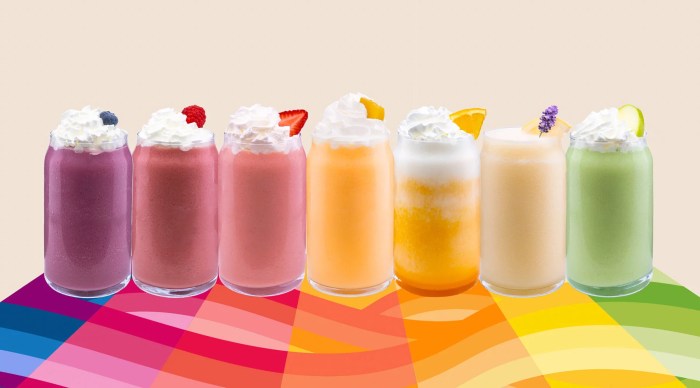
Human Bean energy drink’s success hinges not only on a compelling brand and product formulation but also on a robust and sustainable manufacturing and distribution strategy. Efficient production minimizing environmental impact and a strategic approach to reaching the target market are crucial for achieving profitability and market share.The manufacturing process for Human Bean will prioritize sustainability at every stage.
This begins with sourcing ingredients from ethical and environmentally responsible suppliers, favoring locally grown produce whenever feasible to reduce transportation emissions. The production facility itself will incorporate energy-efficient technologies, such as solar panels and water reclamation systems, to minimize its carbon footprint. Packaging will be designed using recycled and recyclable materials, and waste management will adhere to strict environmental standards.
Furthermore, the company will actively seek certifications like B Corp to demonstrate its commitment to social and environmental responsibility, thereby enhancing brand credibility and appealing to environmentally conscious consumers. This holistic approach ensures that the product’s sustainability is not merely a marketing claim but a fundamental aspect of its production lifecycle.
Manufacturing Process Sustainability
Human Bean will employ a closed-loop manufacturing system where waste is minimized and resources are maximized. For example, spent brewing grains from the production of the drink could be repurposed as animal feed or compost, reducing waste and creating a valuable byproduct. The facility will also invest in advanced filtration and purification technologies to reduce water consumption and wastewater discharge.
Regular audits and assessments will be conducted to monitor environmental performance and identify areas for improvement, ensuring continuous progress towards greater sustainability. This commitment extends beyond the immediate production process to encompass the entire supply chain, from ingredient sourcing to product delivery.
Distribution Channels
Three primary distribution channels are being considered for Human Bean: direct-to-consumer (DTC) e-commerce, strategic partnerships with specialty retailers, and wholesale distribution to larger grocery chains.
- Direct-to-Consumer (DTC) E-commerce: This channel offers maximum control over branding and customer experience. Human Bean can build a loyal customer base through targeted online marketing and personalized interactions. However, it requires significant upfront investment in website development, marketing, and logistics, and may face competition from established online retailers. A successful DTC strategy necessitates a strong online presence and effective customer relationship management.
- Specialty Retailers: Partnering with health food stores, organic markets, and fitness centers allows Human Bean to reach a niche market of health-conscious consumers. This strategy leverages the existing customer base of these retailers, minimizing marketing costs. However, the reach is limited, and it may be difficult to secure shelf space in competitive markets. Negotiating favorable terms with retailers also requires careful consideration.
- Wholesale Distribution to Grocery Chains: This channel offers the potential for mass market reach and significant sales volume. Distribution through major grocery chains provides broad exposure to a wide range of consumers. However, it requires significant negotiation and compliance with the retailers’ stringent requirements, including minimum order quantities and shelf space allocation. Competition for shelf space is fierce, and margins may be lower compared to DTC or specialty retail channels.
Supply Chain Diagram
A simplified representation of the Human Bean supply chain would involve several key players and processes:
Imagine a flowchart. It begins with Ingredient Suppliers (organic farms, ethical sourcing providers) providing raw materials (fruits, vegetables, etc.). These materials are transported to the Manufacturing Facility, where the Human Bean drink is produced. Quality control checks are implemented at every stage. From the facility, the finished product is moved to Distribution Centers, which act as hubs for efficient delivery.
Finally, the product reaches the Retailers (online, specialty stores, grocery chains) and ultimately the Consumer.
This supply chain emphasizes traceability and transparency, enabling Human Bean to monitor the entire process and ensure consistent quality and sustainability at every step. Key relationships with suppliers and distributors are crucial for efficient operations and maintaining the brand’s commitment to ethical and sustainable practices. Regular communication and collaboration throughout the chain are essential for responsiveness to market changes and maintaining optimal performance.
Pricing & Sales Strategy
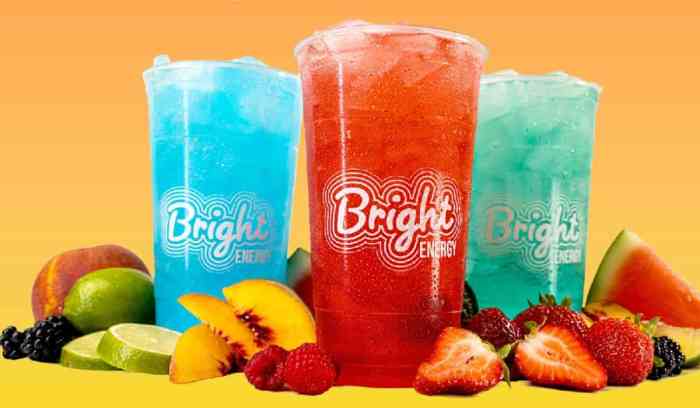
Human Bean energy drink’s pricing and sales strategy must balance competitive pressures with the premium positioning suggested by its unique ingredient profile. A successful launch requires a multi-channel approach leveraging both online and offline sales avenues to reach the target demographic. A robust first-year sales forecast, informed by market analysis and competitive benchmarking, is crucial for securing investment and guiding operational decisions.The pricing strategy will leverage value-based pricing, emphasizing the superior quality and unique benefits of the Human Bean’s formulation.
While direct competitors may utilize a low-cost strategy, Human Bean will differentiate itself by highlighting the use of ethically sourced, high-quality ingredients, resulting in a slightly higher price point than mass-market energy drinks. This premium positioning will resonate with health-conscious consumers willing to pay a premium for a superior product. Pricing will also be adjusted based on packaging size and distribution channel.
Pricing Model
Human Bean will employ a tiered pricing structure. A single 12-ounce can will retail at $3.25, while a four-pack will be priced at $12.00. Larger multi-packs, targeted at wholesale and bulk buyers, will receive further discounts. This pricing model is designed to be competitive within the premium energy drink segment while reflecting the superior quality and unique formulation of the product.
Similar premium energy drinks, such as those featuring organic or functional ingredients, are already established in this price range. A price sensitivity analysis will be conducted during the pre-launch phase to validate the optimal price points and ensure competitiveness.
Sales Channels
Human Bean will employ a multi-channel sales strategy encompassing both online and offline distribution. Offline channels will include partnerships with health food stores, specialty grocery retailers, and gyms. Negotiations with key distributors will be prioritized to secure widespread shelf space in high-traffic locations. Online sales will be facilitated through a dedicated e-commerce website and strategic partnerships with online retailers, such as Amazon and Thrive Market.
This dual approach allows for maximum market penetration and targeted reach.
Sales Forecast
The projected first-year sales forecast for Human Bean is based on a conservative estimate of market penetration and growth within the premium energy drink sector. We anticipate selling 500,000 units in the first year, generating approximately $1.625 million in revenue based on the average price per can. This projection takes into account factors such as marketing spend, competitive landscape, and seasonality.
The forecast incorporates data from comparable product launches in the premium energy drink sector, adjusting for the unique value proposition and potential market demand for Human Bean. This figure serves as a baseline; aggressive marketing and successful partnerships could significantly exceed this projection. A detailed sales forecast, including monthly and quarterly breakdowns, will be developed during the business planning phase, utilizing industry benchmarks and incorporating key performance indicators (KPIs) to monitor progress and make data-driven adjustments as needed.
Marketing & Advertising
Human Bean energy drink’s marketing strategy must leverage its unique brand identity and target audience to achieve maximum market penetration. A multi-platform approach, encompassing digital engagement, print advertising, and experiential marketing, will be crucial for building brand awareness and driving sales. This section details three distinct marketing campaigns, social media content strategies, and print advertisement options.
Three Distinct Marketing Campaigns
Three distinct marketing campaigns will be implemented to reach diverse segments of the target audience. Each campaign will utilize a different primary platform to maximize impact and efficiency. These campaigns will be carefully coordinated to ensure consistent messaging and brand identity across all channels.
- Campaign 1: Influencer Marketing on TikTok (Gen Z Focus): This campaign will leverage the popularity of TikTok to reach the Gen Z demographic. It will involve collaborations with several high-profile TikTok influencers known for their health and wellness content, or those with a significant following within the gaming community. The campaign will feature short, engaging videos showcasing the drink’s benefits, taste, and lifestyle association, encouraging user-generated content through challenges and contests.
Metrics will track engagement rates, video views, and website traffic from TikTok links.
- Campaign 2: Targeted Digital Advertising on Instagram (Millennials & Young Professionals): This campaign will focus on Instagram, targeting millennials and young professionals. High-quality images and videos will showcase the drink in aspirational settings, emphasizing its premium quality and health benefits. Targeted advertising will utilize Instagram’s robust demographic targeting capabilities to reach specific age groups, interests, and locations. Performance will be measured by click-through rates, conversion rates, and brand mentions.
A focus on user-generated content through contests and influencer collaborations will be incorporated here as well.
- Campaign 3: Experiential Marketing at Fitness Events (Health-Conscious Consumers): This campaign will involve sponsoring and participating in fitness events, health fairs, and marathons. Sampling booths will offer free samples of the drink, while branded merchandise and interactive activities will enhance brand visibility and engagement. Data collection will focus on attendee feedback, sample distribution rates, and brand recall. This approach emphasizes direct consumer interaction and fosters a positive brand association with a healthy, active lifestyle.
Engaging Social Media Content
Social media content will be designed to be engaging, informative, and visually appealing. A mix of content formats will be utilized, including high-quality photos and videos, interactive polls and quizzes, behind-the-scenes glimpses into the brand, and user-generated content.
- High-quality visuals: Images and videos will showcase the product in visually appealing settings, highlighting its vibrant colors and refreshing appeal.
- Interactive content: Polls and quizzes will engage users and gather data about their preferences and needs.
- User-generated content: Encouraging users to share their experiences with the drink will build brand loyalty and create authentic content.
- Behind-the-scenes content: Sharing glimpses into the production process and company culture will build transparency and trust.
- Influencer collaborations: Partnering with relevant influencers will expand reach and credibility.
Print Advertisement Copy Options
Three distinct ad copy options for print advertisements will be developed, each targeting a different aspect of the brand and consumer appeal.
- Ad Copy 1 (Focus on Energy & Focus): “Human Bean: Fuel Your Day. Power Your Potential. Our unique blend of natural ingredients provides sustained energy and enhanced focus without the jitters or crash. Taste the difference.” (Image: A person looking energized and focused while working on a laptop.)
- Ad Copy 2 (Focus on Natural Ingredients & Health): “Human Bean: Naturally Energized. Naturally Delicious. Made with carefully selected natural ingredients, Human Bean is the guilt-free way to boost your energy and support your well-being.” (Image: Close-up shot of the drink highlighting its natural ingredients.)
- Ad Copy 3 (Focus on Taste & Refreshment): “Human Bean: The Refreshing Energy Boost You’ve Been Waiting For. Escape the ordinary with Human Bean’s invigorating taste and sustained energy. The perfect pick-me-up for any occasion.” (Image: A group of friends enjoying Human Bean in a vibrant, social setting.)
Competitor Analysis
Human Bean Energy Drink faces a fiercely competitive landscape dominated by established brands and emerging players. A thorough competitor analysis is crucial to identifying opportunities for differentiation and market penetration. This analysis focuses on three key competitors to highlight Human Bean’s unique value proposition.
Key Competitors: Red Bull, Monster Energy, and Celsius
Red Bull, Monster Energy, and Celsius represent a diverse range of energy drink offerings, each with a distinct target audience and marketing strategy. Red Bull, a pioneer in the energy drink market, enjoys significant brand recognition and global distribution. Monster Energy, known for its aggressive marketing and sponsorship of extreme sports, caters to a younger, more adventurous demographic. Celsius, on the other hand, emphasizes its fitness-oriented positioning, highlighting low sugar and functional benefits.
Comparative Analysis: Price, Ingredients, and Marketing
| Feature | Human Bean | Red Bull | Monster Energy | Celsius |
|---|---|---|---|---|
| Price (per can) | $2.50 (estimated) | $2.75 – $3.00 | $2.50 – $3.00 | $2.75 – $3.25 |
| Key Ingredients | Natural caffeine source, B vitamins, herbal extracts (proprietary blend) | Caffeine, taurine, B vitamins, sugar | Caffeine, taurine, B vitamins, guarana, sugar | Caffeine, green tea extract, guarana, B vitamins, low sugar |
| Marketing Strategy | Focus on natural ingredients, sustainability, and mindful energy | High-energy, extreme sports sponsorships, global reach | Aggressive marketing, association with extreme sports and music | Health and fitness focus, targeting active individuals |
The table illustrates that Human Bean’s pricing is competitive, falling within the range of its competitors. However, the key differentiator lies in its ingredient profile and marketing strategy. Human Bean emphasizes natural ingredients and a more mindful approach to energy consumption, positioning itself as a healthier alternative to traditional energy drinks heavily reliant on sugar and artificial additives.
Competitive Advantage Strategy: Natural, Sustainable, and Mindful Energy
Human Bean’s competitive advantage will be built upon its commitment to natural ingredients, sustainable practices, and a marketing message that emphasizes mindful energy consumption. This contrasts with the aggressive, often high-sugar, marketing strategies of its competitors. By focusing on a niche market of health-conscious consumers seeking a natural energy boost, Human Bean can cultivate brand loyalty and establish itself as a premium, responsible energy drink option.
This strategy requires a consistent commitment to ethical sourcing, transparent ingredient labeling, and environmentally conscious packaging. Successful execution of this strategy will allow Human Bean to command a premium price point, justifying the higher cost of natural ingredients and sustainable practices.
Sustainability & Ethical Considerations
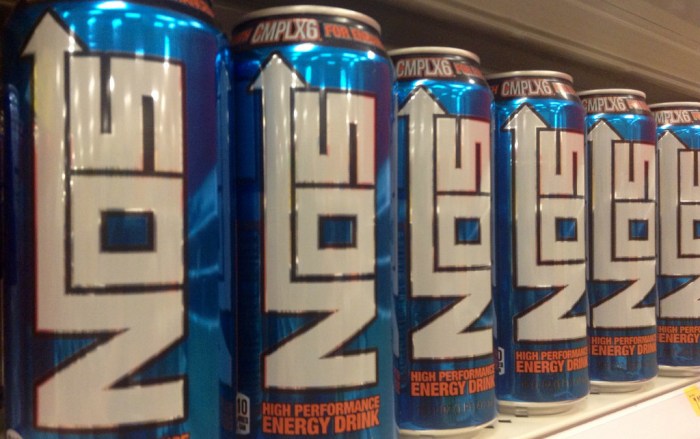
The production and consumption of Human Bean energy drinks, like any beverage, presents a range of sustainability and ethical challenges. Minimizing the environmental footprint and ensuring ethical sourcing of ingredients are crucial for building a responsible and reputable brand. This requires a multifaceted approach encompassing ingredient selection, packaging, and manufacturing processes.The environmental impact of Human Bean energy drinks will stem primarily from agricultural practices related to ingredient sourcing, manufacturing processes, packaging materials, and transportation.
Mitigation strategies will need to address each of these areas. For example, the use of water-intensive ingredients necessitates exploring drought-resistant crops and water-efficient farming techniques. Similarly, carbon emissions from transportation can be reduced through optimized logistics and a focus on regional sourcing wherever feasible.
Environmental Impact Mitigation
Reducing the environmental impact of Human Bean requires a holistic strategy. This involves minimizing water usage in agriculture through precision irrigation and water recycling. The selection of sustainably sourced ingredients, such as organically grown fruits and fair-trade certified sweeteners, directly reduces the environmental burden associated with conventional farming practices. Furthermore, exploring renewable energy sources for manufacturing facilities and adopting carbon offsetting programs can significantly reduce the company’s carbon footprint.
Finally, optimizing transportation routes and using fuel-efficient vehicles will minimize emissions associated with distribution. A life cycle assessment (LCA) should be conducted to quantify the environmental impact at each stage and identify areas for further improvement. This data-driven approach ensures that sustainability initiatives are targeted and effective.
Ethical Sourcing of Ingredients
Ethical sourcing of ingredients is paramount for maintaining brand integrity and consumer trust. Human Bean will prioritize suppliers committed to fair labor practices, environmental sustainability, and responsible land management. This includes verifying compliance with international labor standards, such as the Fair Labor Association’s Workplace Code of Conduct, and supporting farmers engaged in sustainable agriculture. Transparency in the supply chain will be ensured through rigorous auditing and traceability systems, allowing consumers to understand the origin of each ingredient.
The company will actively engage with its suppliers to foster long-term relationships built on mutual respect and shared values. Prioritizing locally sourced ingredients where feasible further reduces the carbon footprint associated with transportation and supports local economies.
Sustainable Packaging and Waste Reduction
Sustainable packaging is a key component of Human Bean’s environmental responsibility strategy. The company will explore the use of recycled and recyclable materials, prioritizing biodegradable and compostable options where possible. Lightweight packaging designs will minimize material usage and reduce transportation costs. A comprehensive waste management program will be implemented, including partnerships with recycling facilities and initiatives to encourage consumer participation in recycling programs.
Reducing packaging volume through innovative designs, such as concentrated formulations, can further lessen the environmental burden. The company will actively monitor consumer feedback and adapt its packaging strategy to ensure continuous improvement in sustainability. A clear and visible recycling label will be included on all packaging to facilitate consumer awareness and action.
Potential Challenges & Solutions
Launching a new energy drink, even one with a novel brand like “Human Bean,” presents a complex landscape of potential hurdles. Success hinges not only on a compelling product but also on navigating the competitive market and addressing potential operational and logistical challenges. Overcoming these obstacles requires proactive planning and the development of robust contingency strategies.
Competition in the Energy Drink Market
The energy drink market is fiercely competitive, saturated with established brands boasting significant market share and brand recognition. Human Bean will face an uphill battle in securing shelf space and consumer attention amidst this established competition. Furthermore, existing players often possess substantial marketing budgets, enabling them to saturate media channels and maintain a strong online presence. This makes it challenging for a newcomer to break through the noise and achieve significant market penetration.
Maintaining Consistent Product Quality and Supply Chain Management
Ensuring consistent product quality and a reliable supply chain is crucial for any food and beverage company, especially one operating in a sector as demanding as energy drinks. Fluctuations in ingredient costs, logistical delays, and potential production bottlenecks can severely impact product availability and negatively affect brand reputation. Furthermore, maintaining quality control across multiple production batches and various distribution channels requires stringent quality assurance protocols and a highly efficient supply chain.
Consumer Perception and Brand Acceptance
Gaining consumer trust and acceptance for a new energy drink requires overcoming inherent skepticism and establishing a strong brand identity. Consumers may be hesitant to switch from established brands, particularly if they have already formed brand loyalty. Furthermore, negative publicity, even if unfounded, can severely damage a new brand’s image, hindering its growth trajectory. This necessitates a robust public relations strategy and a commitment to transparent and ethical business practices.
Solutions to Identified Challenges
To counter the intense competition, Human Bean should focus on a niche market strategy, targeting a specific demographic with a tailored marketing message. This could involve emphasizing sustainable sourcing, unique flavor profiles, or functional benefits not offered by competitors. Furthermore, a strategic partnership with a well-established distributor could expedite market entry and improve shelf placement. A strong social media campaign, focusing on influencer marketing and engaging content, could also help cut through the clutter and build brand awareness.Addressing supply chain vulnerabilities requires diversification of sourcing and strategic partnerships with reliable suppliers.
Implementing robust quality control measures at every stage of production, from ingredient sourcing to bottling, is essential to maintain product consistency. Investing in advanced inventory management systems can help optimize stock levels and minimize the risk of shortages or surpluses.To build consumer trust, Human Bean needs to prioritize transparency and ethical sourcing. Highlighting the product’s natural ingredients, sustainable packaging, and fair labor practices in marketing materials will resonate with ethically conscious consumers.
Proactive crisis management planning and a strong public relations team will help mitigate the impact of any negative publicity. Investing in independent product testing and certification can further build consumer confidence.
Contingency Planning for Unforeseen Problems
A comprehensive contingency plan should incorporate various scenarios, including unexpected ingredient shortages, negative media coverage, and sudden changes in consumer demand. This plan should Artikel specific actions to be taken in each scenario, assigning responsibilities to key personnel and establishing clear communication channels. Regularly reviewing and updating the contingency plan based on market feedback and emerging trends is crucial to maintain its effectiveness.
For instance, a sudden spike in sugar prices might necessitate a temporary price increase or a reformulation of the drink. A negative review by a major influencer could require a rapid response involving damage control and reputational repair strategies. A shift in consumer preferences towards low-calorie beverages could trigger a product line extension or a reformulation of existing products.
Outcome Summary
Human bean energy drinks represent a compelling proposition: a natural, sustainably produced energy boost in a market saturated with synthetic alternatives. While challenges undoubtedly exist, a well-executed marketing strategy, coupled with a commitment to ethical sourcing and sustainable practices, could position this brand for significant growth. The key lies in effectively communicating the unique value proposition to a discerning consumer base increasingly focused on health, wellness, and environmental responsibility.
Success will hinge on building brand trust and delivering on the promise of a truly natural and effective energy drink.
